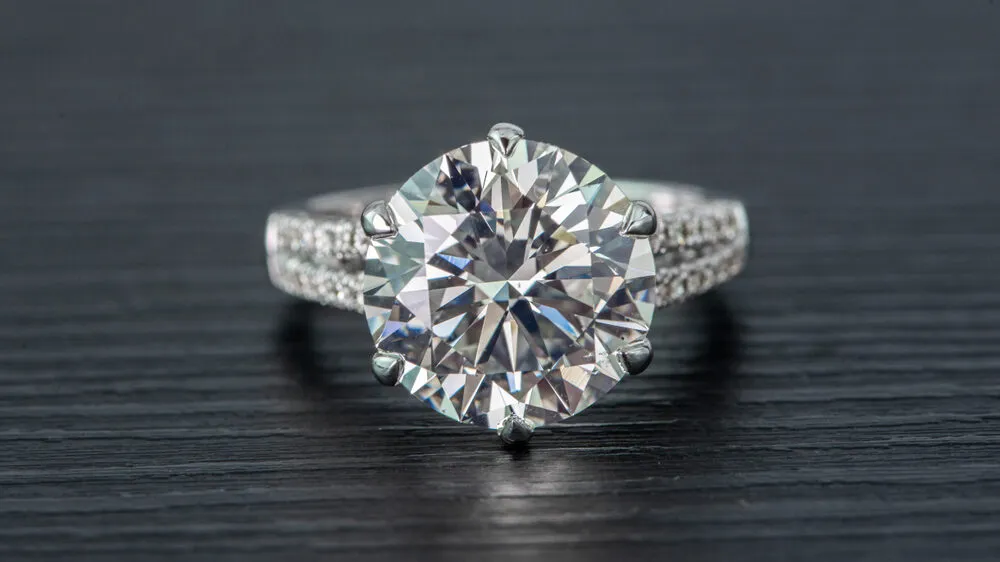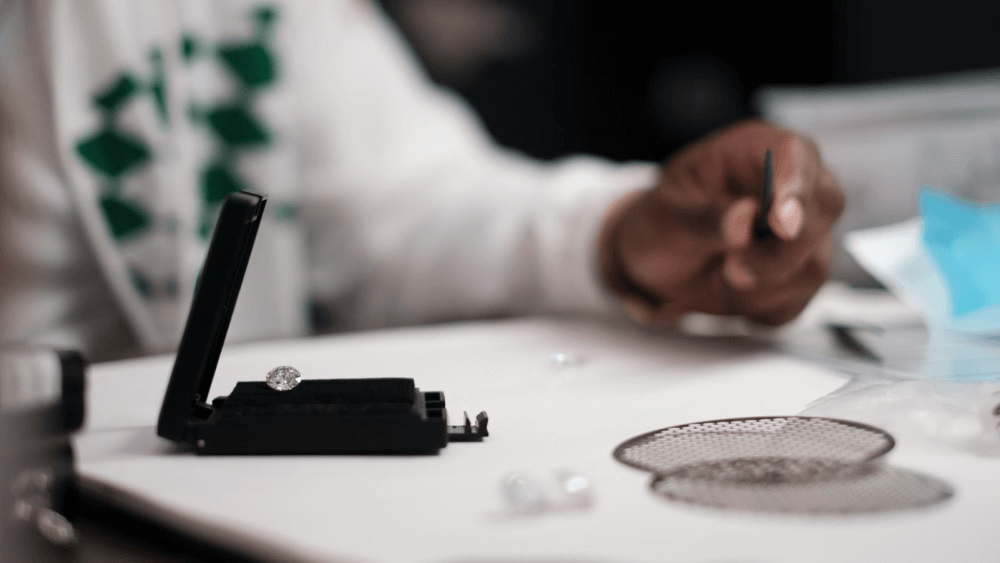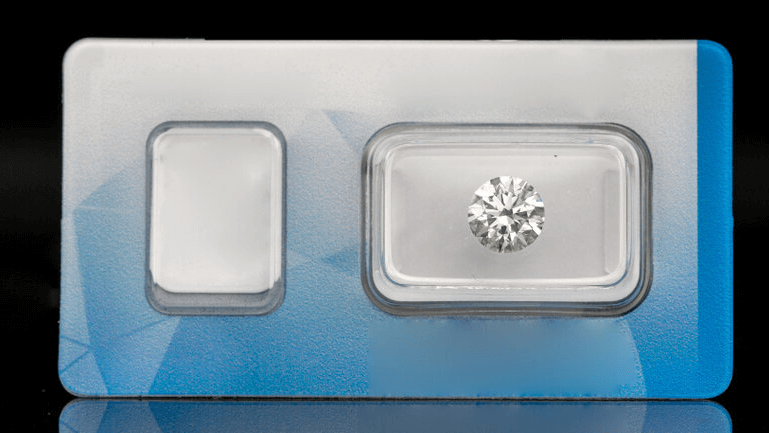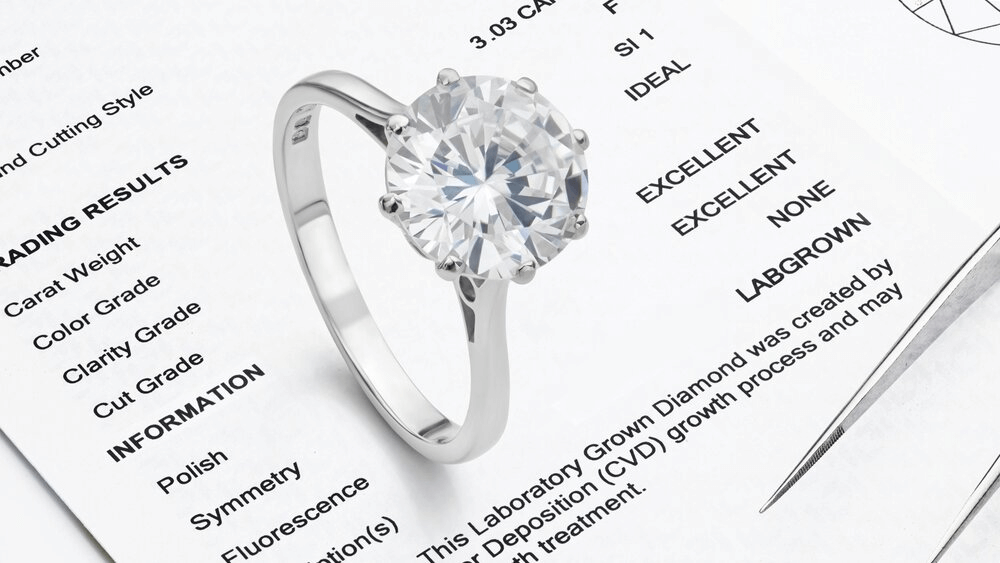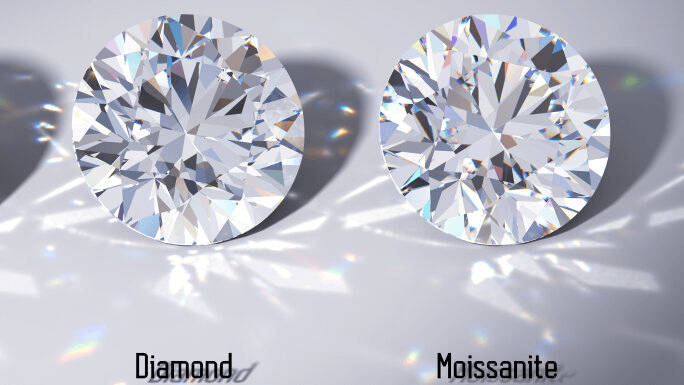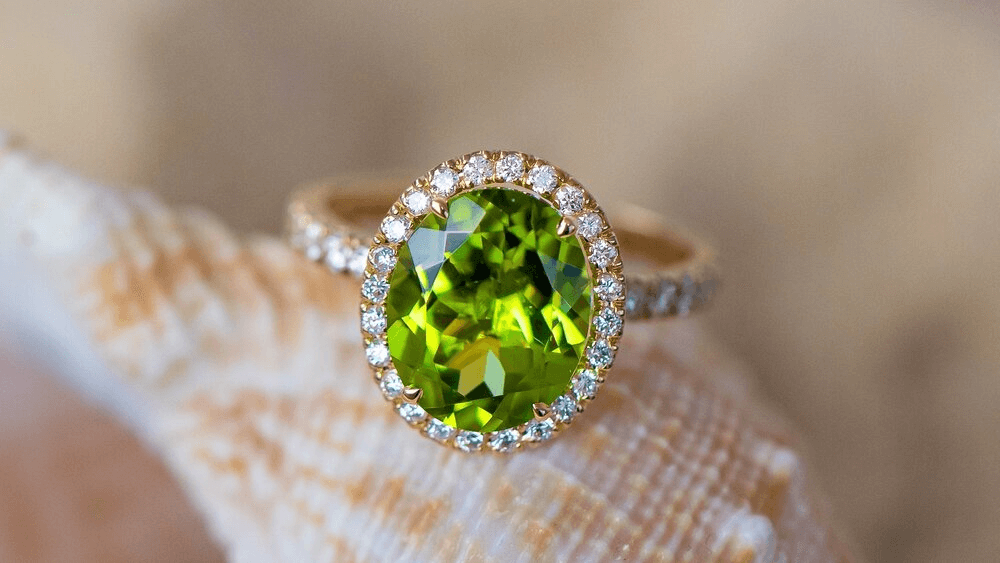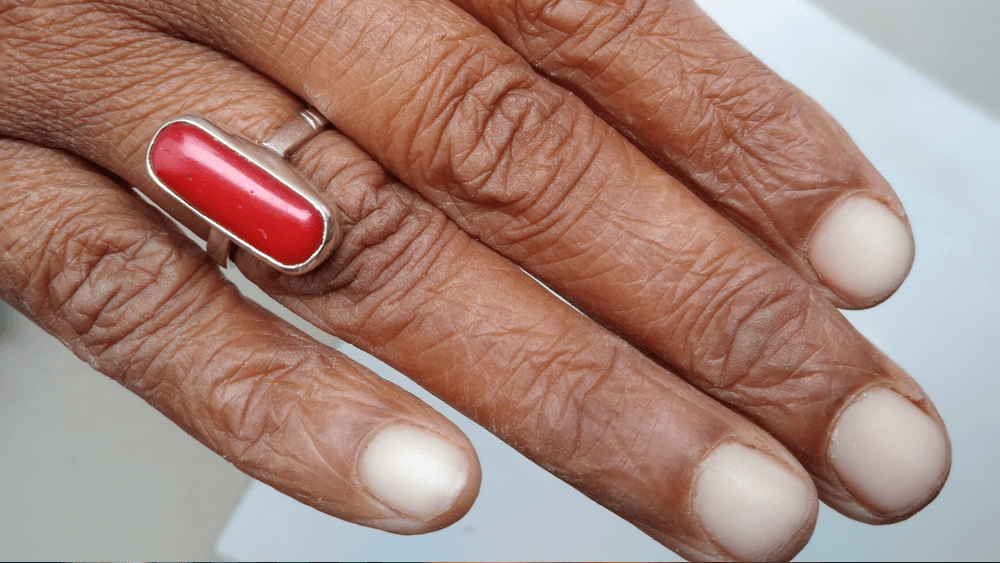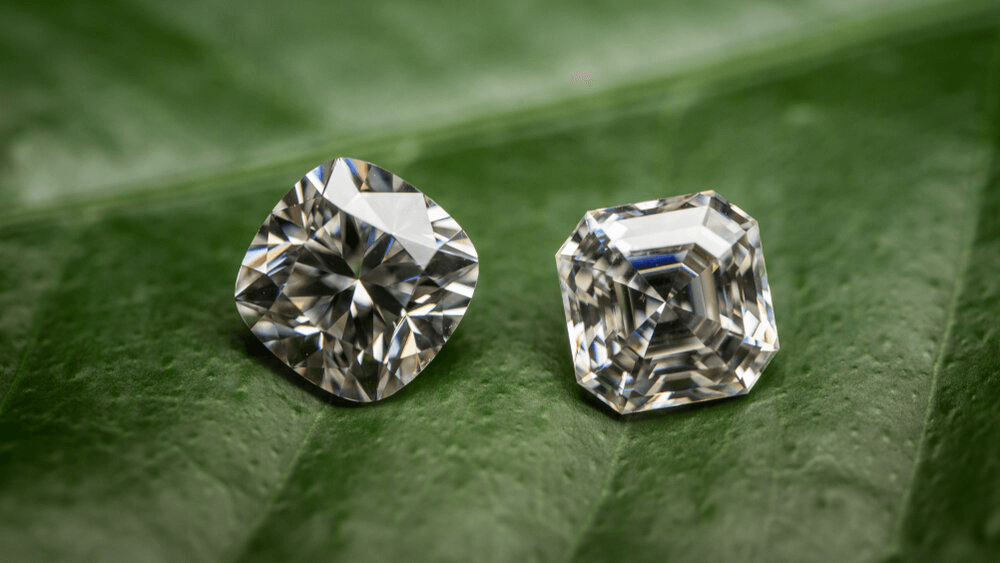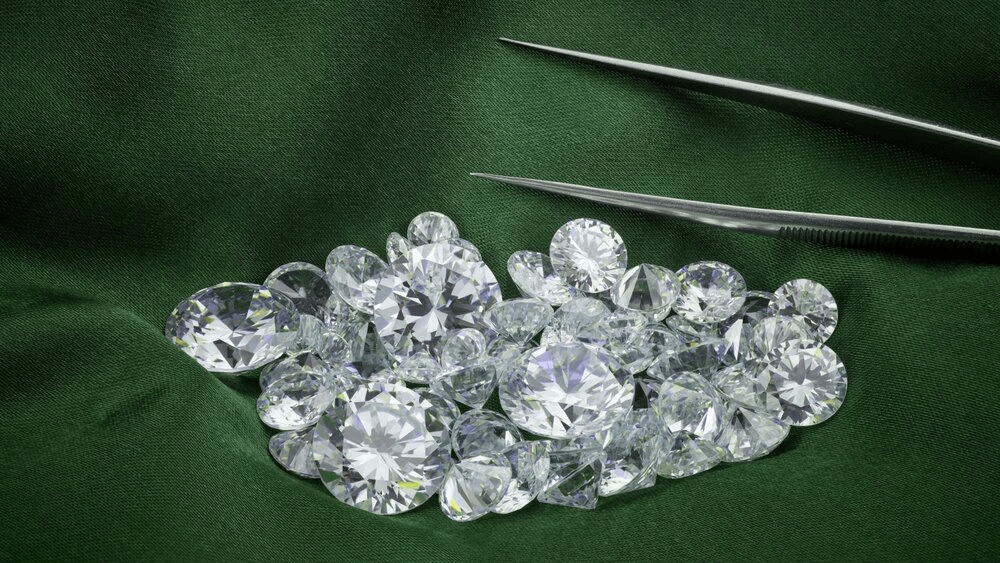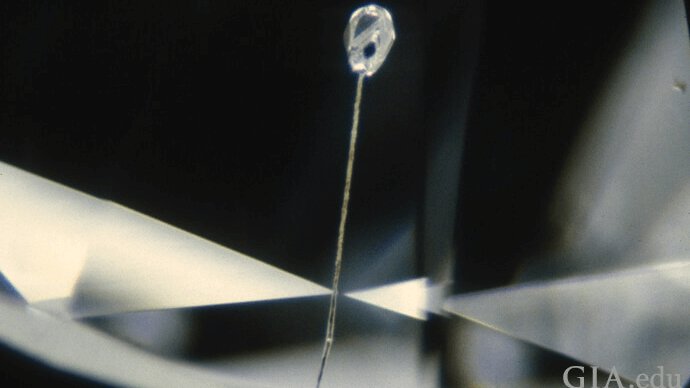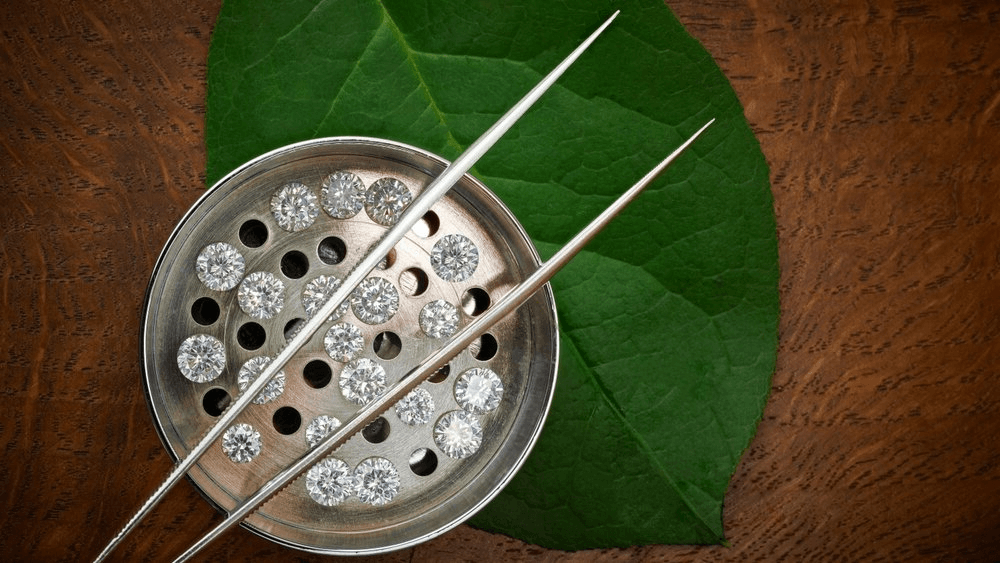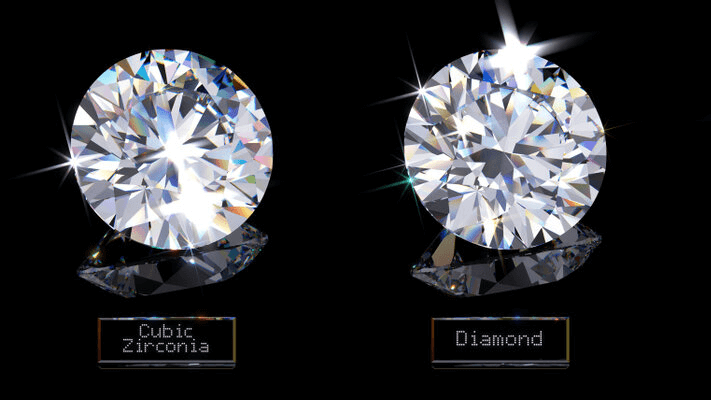Moissanite vs Diamond: Which One Sparkles Brighter?

By Gary A.

Edited by Olivia H.
Published Mar 17, 2022
Edited on Dec 18, 2024
When comparing Moissanite vs. Diamond, it’s easy to get caught up in the debate over sparkle, cost, and overall value—yet each gemstone brings its own allure to the world of engagement rings.

- 8 Quick Tips for Buying a Diamond Engagement Ring and Examining Moissanite vs Diamonds
- Introduction: Moissanite vs. Diamond – The Sparkling Debate
- What is Moissanite? Unearthing its Origin and Composition
- The Price Factor: Cost Comparison and Affordability
- Moissanite vs. Diamond
- Moissanite vs Diamond: Side by Side Comparison
- Our Expert Take
- 10 FAQs
Before we dive deeper into the specifics, here are some practical tips to help guide your decision-making process:
8 Quick Tips for Buying a Diamond Engagement Ring and Examining Moissanite vs Diamonds
- Tip 1 : Understand the Visual Differences Sparkle and Fire: Pay close attention to how the stone reflects light. Moissanite tends to display more colorful fire than a diamond, which may be noticeable in larger stones.
- Tip 2 :Color and Clarity: Examine the stone under different lighting conditions. While diamonds range in color and clarity, moissanite usually has a slight yellow or gray tint in larger sizes.
- Tip 3 :Check for Hardness and Durability Scratch Test: Use a simple test to check the hardness. While both diamonds and moissanite are hard, a diamond scores a perfect 10 on the Mohs scale, which is slightly higher than moissanite. Examine Under Magnification: Look for any signs of chipping or scratching, especially around the edges which can be more prone to damage in softer stones.
- Tip 4 :Compare Size and Weight Size vs. Carat Weight: Understand that moissanite stones are lighter than diamonds of the same size. A diamond and a moissanite stone of the same carat weight will differ in size, with moissanite appearing larger.
- Tip 5 :Evaluate the Pricing Cost Analysis: Moissanite is generally less expensive than diamonds. If a stone is priced significantly lower than comparable diamonds, it could be moissanite. Be aware of pricing that seems too good to be true for diamonds.
- Tip 6 :Investigate the Cut and Shape Cut Quality: Both diamonds and moissanite can have high-quality cuts, but the cutting style may vary due to their different optical properties. Examine how well the stone is cut, as it influences the sparkle and overall appearance.
- Tip 7 :Look for Unique Identifiers Refractive Properties: Moissanite has a different refractive index compared to diamonds. This can sometimes be observed as a ‘doubled’ facet pattern when viewed closely. Electronic Testing: Consider using a diamond tester that measures electrical conductivity, as moissanite and diamonds conduct electricity differently.
- Tip 8 :Consider Personal Preferences Aesthetic Preference: Decide what matters most to you in a gemstone. Some may prefer the unique brilliance of moissanite, while others may value the tradition and qualities of a diamond. Ethical and Environmental Considerations: If ethical sourcing and environmental impact are important to you, explore the origins of both moissanite and diamonds.
Now that you’ve got these practical tips, use Jeweler AI below to find the perfect engagement ring that suits your style and budget:
Introduction: Moissanite vs. Diamond – The Sparkling Debate
We all think about what people are going to say and think when they see the ring in the Moissanite vs. Diamond debate. Doing research at the computer, consulting with your jeweler, waiting for the call that it’s all ready and waiting for you – our minds are constantly wandering off not just to the moment we pop the question, but also to the time when the ring is on her finger and being admired by friends, relatives, co-workers, and random strangers who happen to catch it sparkling from across the room.
It’s not a character flaw to want to impress people – your partner included – and it’s something a lot of shoppers feel. There’s a certain amount of pressure to surpass all expectations, particularly when it comes to the size of your diamond.
It’s often the pressures of that ‘go big or go home’ mentality that introduces shoppers to moissanite – a common, low-value diamond simulant that bears some resemblance to diamond and enables shoppers to place a much larger center stone in their ring, for a much lower cost.
But how do they really stack-up against one another?
What is Moissanite? Unearthing its Origin and Composition
Most shoppers come across this mineral during their research, so here is everything you need to know about the mineral, from its appearance and physical properties to its value.
It is crystalized silicon carbide (SiC) that bears some resemblance to diamond. While it is a naturally-occurring mineral, the moissanite used in jewelry is man-made.
The first thing you will notice about moissanite is its resemblance to diamond. When cut, it looks like a pretty convincing alternative – clear and highly refractive, it seems to share more similarities than differences.
On closer inspection, however, the differences are pretty significant. For starters, moissanite has a lot more refractive and a higher refractive index than diamond, meaning that it emits far more fire than brilliance (more on that below).
Moissanite is often comparable to a K or L color on the color scale, although the GIA does not grade moissanite. It’s relatively hard to spot in smaller moissanite stones, but larger moissanite stones tend to appear a little yellow (or even green), and, while it’s possible to create whiter moissanite, larger stones with great color are harder to come by.
Moissanite’s Origins: From Meteor Crater to Jewelry Store
Natural deposits are found in nature, but the moissanite you encounter today will be lab-grown.
The first natural moissanite deposits were discovered relatively recently, in the late nineteenth century. They were found in a meteor crater in Canyon Diablo, near Two Guns in Arizona, having been brought to earth from stars located beyond our solar system (a fact which was proved later, during analysis of a meteorite that landed in Australia in 1969). At first, they were presumed to be diamond.
While silicon carbide had already been manufactured in labs by that point, it took several years before these natural deposits were identified as being silicon carbide, and not diamond. It was eventually named after its discoverer, Henri Moissan.
For decades, geologists believed that the earth’s few natural moissanite deposits were exclusively extraterrestrial (from space), and not naturally-occurring on earth. In the mid-twentieth century, however, moissanite was found in the upper mantle, within kimberlite deposits.
Whether from space or earth, however, natural moissanite is incredibly rare. The moissanite you encounter will have been grown in a lab.
The Price Factor: Cost Comparison and Affordability
Moissanite is cheap because it’s easily produced. Unlike diamond, it’s not a finite natural resource that requires considerable effort to recover from kimberlite pipes and alluvial deposits – it can simply be made and replaced according to demand.
The fact that moissanite is as cheap as it is poses a major issue for shoppers. Diamond scams that utilize moissanite as a convincing diamond simulant are pretty common, since scammers can purchase moissanites for very little money, and sell them to unsuspecting buyers for thousands of dollars more than their initial investment.
Provided you shop from a reputable jeweler, however, you don’t need to worry about inadvertently overpaying for an inferior substance.
Moissanite vs. Diamond
Appearance and Light Performance
Compared with diamond, moissanite looks convincing enough in a single photograph, but there’s a world of difference between how you view and experience one of these stones through a screen, and how you experience it in real life. For most people, the difference is a dealbreaker in and of itself.
While there are some similarities, even non-experts will be able to identify a clear difference between a diamond’s light performance, and a moissanite’s light performance.
Does that matter? For most shoppers, yes. A diamond’s light performance is one of its most distinctive and coveted traits. Shoppers learn to scrutinize the specifics of a diamond’s cut in order to maximize the light performance of their ring, so switching to a simulant with that is incapable of creating the same sparkle is an off-putting idea for many.
While a Round Brilliant diamond will create a mesmeric display of white and colorful sparks of light, Moissanite will produce significantly less white light. The effect has less dimension to it, and the distinctively crisp brightness of diamond is missing.
The effect is convincing enough in brief glimpses, which is why moissanite has seen some popularity in fashion jewelry, but it’s far from ideal if the stone is intended to be worn regularly.
Color
In many cases, moissanite features a poorer color than diamond. Most moissanite stones are judged to fall around a K grade, while it’s a lot easier to find diamonds that are Colorless (D, E, and F) or Near Colorless (grades G, H, I, and J).
While color isn’t the most important of the Four Cs when it comes to diamond quality, we always urge readers to go no lower than the Near Colorless range. A visible yellow tint can easily ruin an otherwise beautiful diamond and make your engagement ring look cheap – or even old and dirty.
As we mentioned above, it’s possible to find whiter moissanite, it’s not so easy. Larger moissanite stones, while cheap, are likely to show some color.
What’s more, due to the stones’ lack of brilliance, a slight amount of color isn’t ‘brightened’ by light performance. While these stones create plenty of beautiful fire, it’s not the right kind of sparkle to brighten the stone and make it appear a higher quality than it really is.
Clarity
Like diamonds, moissanites do feature internal flaws, but they are generally very minor, and moissanites are almost always eye clean.
Of course, the larger the moissanite you’re looking at, the higher the chance you’ll be able to detect those inclusions with your naked eye. In general, though, it’s not hard to track down a moissanite that is at least comparable to VS clarity, so this is one area where diamond is at a slight disadvantage.
Durability and Strength
It’s not all about looks. As the hardest natural substance on earth, diamond has moissanite beat in terms of strength and durability – but close to diamond is this gemstone?
Moissanite scores a 9.25 on the Mohs hardness scale, which puts it just 0.75 points behind diamond. It can withstand high pressure and heat, thanks to the strong bonds that comprise its structure.
Properly cared for, moissanite could last years – even with regular wear. They are very resistant to scratching and chipping, although not totally immune.
Unlike cubic zirconia – another common diamond simulant – moissanite doesn’t suffer from a short shelf life, and it won’t turn cloudy or dull with daily wear.
This is considered to be a pretty compelling selling point for moissanite, and it no doubt comes as a great relief to shoppers who have purchased moissanite jewelry already. For us, the other downsides to moissanite outweigh this particular benefit – particularly for engagement rings – but it’s a reassurance, nonetheless.
Cultural Significance and Meaning
Moissanite is a pretty and interesting mineral with a great history, but it’s also long-since detached from its unique, extra-terrestrial roots.
While there is something undeniably romantic about wearing a piece of a fallen star – a sparkling remnant of a meteorite crash – on our finger, the moissanite available to purchase today is no longer part of that narrative. It’s produced on mass, in lab-conditions, and lacking the uniqueness and romance that makes diamond the obvious choice for a gift this important and this significant.
Since moissanite’s appearance is valued because of its resemblance to diamond, its main selling point is not a result of any unique qualities, but a result of its low price. There’s no special meaning behind it. A lot of shoppers start off feeling impressed by the size of moissanite they can afford (compared with the size of diamond their budget accommodates) but, when the time comes, wind up realizing that a carat weight worthy of a celebrity is not worth the sacrifices.
Availability
There’s an added downside to moissanite’s lack of uptake within the world of fine jewelry: it’s a lot harder to come by and, as a result, the options are more limited.
Until 2015, one company held a patent which gave them exclusive rights to produce and market synthetically-produced moissanite in jewelry. For this reason, the offerings remain relatively slim, and shoppers still struggle to find much choice for moissanite jewelry. There are some options online but, unfortunately, shoppers fall into the same trap we warn against when it comes to purchasing diamond: you can’t gauge how the finished product will look in real life.
If you’ve chosen to invest in a diamond engagement ring, then finding a reputable local jeweler is incredibly easy. Diamond is still regarded ultimate medium for any master jeweler, which means that you won’t just find a jeweler who sells diamond rings – you’ll find a jeweler who is truly passionate about it, too.
Moissanite vs Diamond: Side by Side Comparison
As we mentioned, the similarities between diamond and moissanite tend to be a lot more noticeable through a screen than in real life. Moissanite is not as readily available through fine jewelry stores as diamond is, so it’s not always possible to see a side-by-side comparison in person.
Remember this: while seeing a moissanite stone on its own will no doubt mean that the average onlooker is impressed by its sparkle and color, a direct comparison with a real diamond will always reveal moissanite’s inferiority.
Our Expert Take
It’s understandable why moissanite appeals to so many shoppers. Anyone with a more limited budget will know that carat weight is always a primary concern – or, more specifically, figuring out how to maximize carat weight and create the most impressive ring possible. If there’s an opportunity to spend the same amount on a relatively convincing diamond simulant two or three times the size, then it’s very tempting to take it.
The thing is, once you see these two different gemstones in real life, the differences are clear and, suddenly, the extra carat weight turns into a magnifying glass on all the shortfalls between moissanite and diamond.
For something as important as an engagement ring, diamond will always be the superior choice – both in terms of its backstory, and its beauty.
10 FAQs
- Q: Can you tell the difference between moissanite and diamond?
A: Yes, but it might require close examination. Moissanite displays more colorful fire and may have a slight color tint compared to diamonds. - Q: Is moissanite as strong as a diamond?
A: Almost, but not quite. Diamonds score a perfect 10 on the Mohs hardness scale, while moissanite ranks at 9.25. - Q: Does moissanite sparkle more than diamond?
A: Moissanite tends to exhibit more fire (colorful sparkle) than diamonds, but diamonds offer a unique brilliance (white light sparkle). - Q: Are moissanite rings cheaper than diamond rings?
A: Generally, yes. Moissanite is typically less expensive than diamonds of similar size and quality. - Q: How does moissanite compare to lab-grown diamonds?
A: Moissanite is a different substance (silicon carbide) and is usually more affordable, while lab-grown diamonds are chemically identical to natural diamonds. - Q: Can moissanite pass as a diamond in jewelry?
A: To an untrained eye, perhaps, but experts and those familiar with diamonds can often tell the difference, especially with larger stones. - Q: Is moissanite a good choice for an engagement ring?
A: It depends on personal preference. Moissanite is durable and brilliant, making it a popular and more affordable choice for many. - Q: Does moissanite lose its sparkle over time?
A: Moissanite is durable and resistant to scratching and clouding, so it maintains its sparkle well. - Q: Is moissanite ethical and environmentally friendly?
A: Yes, as it is lab-created, it often has fewer ethical and environmental concerns compared to some diamond mining practices. - Q: Can a jeweler easily identify moissanite vs diamond?
A: Yes, jewelers can use tools like a moissanite tester (measuring electrical conductivity) and visual inspection to distinguish the two.
Unravel the mystery of Moissanite vs Diamond with Jeweler AI. Dive into a world of sparkling choices and find your perfect match, tailored to your taste and style.
FOLLOW-UP GUIDE SERIES

